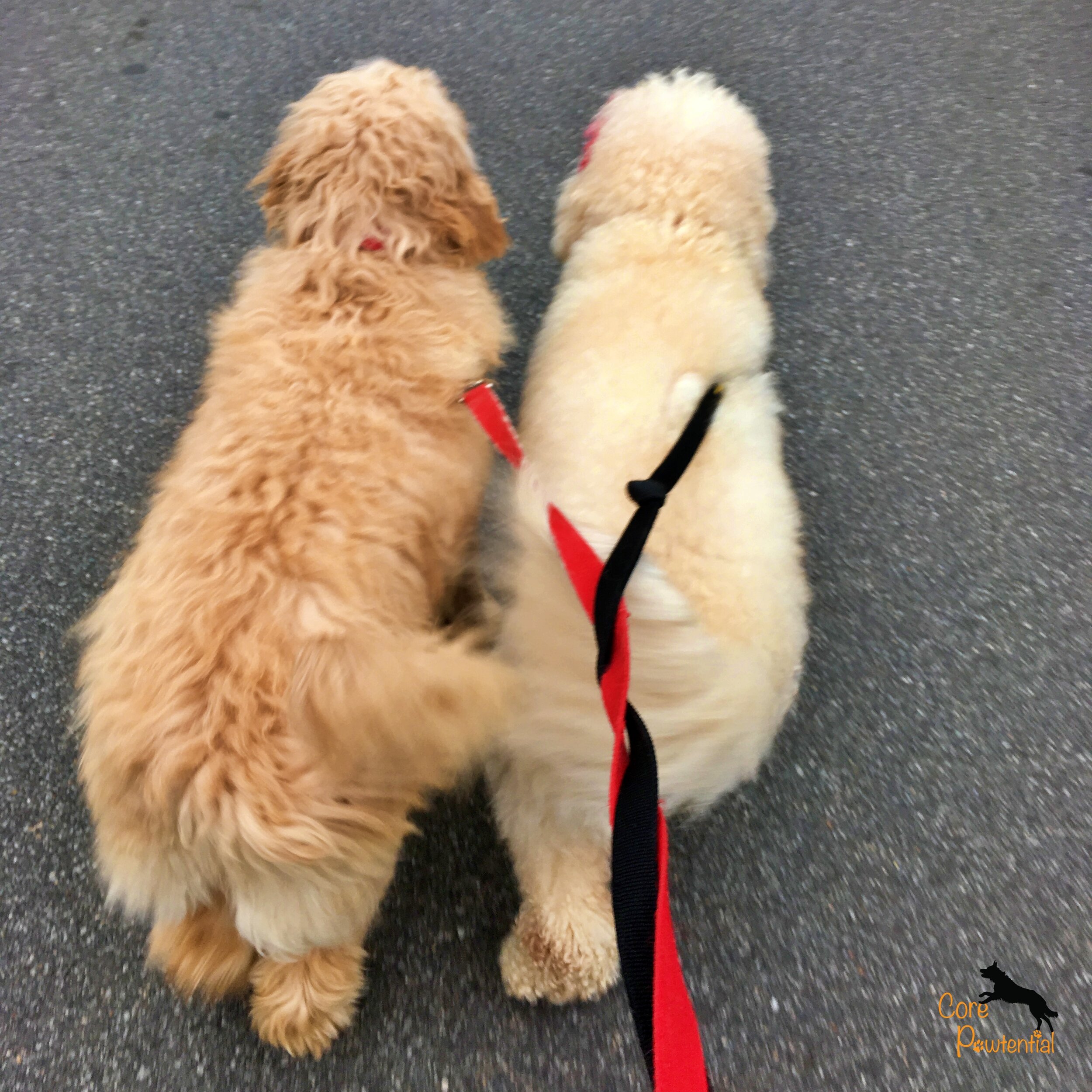For dog’s sake, please walk your dog
To this day, it never fails to amaze me how many people do not walk their dogs daily. Growing up in a city, we did not have access to a backyard. Taking the dogs out regularly is a chance for the dogs (and me!) to stretch our legs, breathe in some fresh air, and a much appreciated opportunity to get out of our tiny apartment. These days, even though I am fortunate enough to have access to a backyard, I still take my dogs out for regular walks. I consider walking my dog(s) a responsibility that comes with having a dog. Unless there are special circumstances (e.g., brutal heat, torrential rain, severe weather warning) or health issues (e.g., dog sick and/or injured), there has never been a day when I do not take my dog(s) out for at least one walk.
Where we walk and how long the walk is depend on many things. For instance, Nomial does not like to go for long walks in the morning, so we go for a 10-15 minutes walk around the block after breakfast. In the evening, he is eager to go for a longer walk before dinner, so we go for a 45-60 minutes walk somewhere nice and dog-friendly. With my time being more flexible on the weekends, we typically go for a long, exploratory walk in the nature where he can sniff his heart out and explore the trails.
More often than not, these walks are not particularly strenuous activities for Nomial or foster puppy Cody. Do these walks alone provide enough exercise for them to maintain a healthy lifestyle? Most definitely not, which is why we supplement with regular canine fitness and conditioning exercises. Nonetheless, these walks provide a form of regular exercise for them, and they are essential for both their physical and mental health. In fact, I would consider regular walks the MINIMUM amount of exercise required for my current dogs. Of course, if you are one of the fortunate people with access to acres of property that your dog(s) can safely roam and exercise freely, then perhaps your dog(s) may not require regular walks. However, this may not be possible for many people. I believe that most dog(s) require regular walks, as walking is of the easiest, and most accessible form of exercise that is available for most dog guardians.
Now, I recognize that dogs with certain issues may not necessarily benefit from regular walks. For example, dogs with aggression issues, dogs who suffer from severe anxiety, reactive dogs, and/or dogs with a variety of physical issues may not be the best candidates for regular walks in the neighborhood. A few years ago, we had a foster dog with severe anxiety issues and would go into full-blown panic mode when something startled them - it could be the leaves rustling in the wind and they would be completely unmanageable. Clearly walking around the neighborhood would have caused more harm (i.e., the panic, the uncontrollable behavior), so we settled for walking her around the perimeter in the backyard on a regular basis.
If you have a dog (or dogs) who may not be good candidates for regular walks in your neighborhood, here are a few budget-friendly suggestions to help them get some regular exercise:
If you have a backyard, walk them in the backyard.
a. Encourage them to follow you around the perimeter of your backyard. Depending on the size of your backyard, do this a few times every day.
b. Set up a few “obstacles” (e.g., cones, garbage cans, chairs) and encourage them to go around them. You can even switch up the obstacles every few days to keep things interesting.
c. Sprinkle their food (or treats) in the backyard and encourage them to sniff for them. This is an excellent activity that combines enrichment and exercise - this is especially helpful for senior dogs, dogs with mobility issues and/or dogs who are nervous about the outside world.
If you do not have a backyard,
a. If possible, choose the time of the day with the least amount of traffic (e.g., really early in the morning or late at night) to walk them
b. If possible, drive to areas with less traffic for your regular walks (e.g., parking lots near office buildings after hours or on the weekends).
Of course, it is important to remember that the amount of time for regular walks depends on the specific dog. For example, puppies and senior dogs may benefit from a shorter walk, a few times a day, whereas a healthy adult dog may do best with one short walk and one long walk a day. Breeds that are bred to be high energy (e.g., pointers, setters, shepherds) may require longer walks than lower energy breeds (e.g., Bull mastiffs, Great Danes, French bulldogs). Dogs who are recovering from illnesses and/or injuries should start with shorter walks and slowly built up their stamina.
Even if you do not have the time, energy, and/or budget to invest in canine fitness and conditioning, walking your dog regularly would be an invaluable investment in your dog’s physical and mental health!
If your dog is not suffering from debilitating issues that prevented them from moving around and the weather is not harsh, please walk your dog!




